On May 24, Salvador Ramos, an 18-year-old young man, murdered in cold blood with an AR-15 semi-automatic rifle 19 children at Robb Elementary School, in Uvalde, Texas, and two of their teachers. “The worst such incident since eight students and two teachers were killed at Santa Fe High School in Texas in May 2018,” CNN commented. And the second worst recorded school shooting in U.S. history.
The problem of armed violence arises once again in U.S. society, one of its most annoying recurrences, a thick déjà vu that unleashes horrors, affirmations, prayers and nightmares in the consciences of citizens. With each massacre one is witnessing, fundamentally, the recycling of an old discussion, inevitably crossed by the specific place of its actors/issuers in the political spectrum. This discussion had one of its critical points during the so-called Reagan era, when the thought associated with it blamed the media, in particular the Hollywood industry — and a little later, electronic games — for being the cause of the problem. An idea that the liberals — and not only Hollywood directors and screenwriters — rejected on the grounds that they were merely reflecting the violence that existed in the streets.
Obviously, there is an accumulation of social violence operating here that has certain breakpoints: it began with the extermination of the native Americans, went through a bloody war of national liberation against British colonialism, continued with another war engendered to snatch from Mexico a huge slice of its territory, continued by a very violent collision between the North and the South, and culminated in the territorial expansions of the late 19th and early 20th centuries — a list to which, without a doubt, such events could be added up to present day.
In the midst of it all, certain heroes in psychology and popular imagination play their part: comics of settlers with arquebuses vs. Indians with arrows, the Wild West, Billy “The Kid,” Wyatt Earp, Bonnie and Clyde, Al Capone…, characters who, to achieve their individual goals, resorted to artifacts that begin with a Colt 38 and end with a Thompson machine gun set to ring merrily on the streets of Chicago during the Great Depression and Prohibition. And when considering alienations of all kinds that are active in daily life — such as the aftermath of the Vietnam, Gulf, Iraq, Afghanistan and other wars — and recently the impact of the pandemic, inflation; the problem of weapons in this country becomes much more complicated, it is at the center of culture. A programmatic saying clearly indicates this: “shoot first and ask questions later.”
https://youtu.be/JBMbrd6t350
The social discourse on the subject is often escorted by a fairly widespread reasoning: “it is not guns that kill, but people.” Or what is the same: “weapons cannot be fired by themselves.” But if you go to the root, one realizes that this formulation is usually found (although not limited) to characters linked to the National Rifle Association (NRA) and, above all, to the strong dividends from the business of selling weapons and ammunition. Therefore, one of the vicious circles occurs at this point: Americans tend to stock up on firearms after those mass shootings happen, and they do so…in anticipation of possible government restrictions in this area.
That is why the profits of arms manufacturers increase. Let’s say Sturm and Smith’s stock rose after the 2012 Sandy Hook Elementary School massacre and the 2015 San Bernardino shooting, according to an FBI report. And this terrible new Texan chapter was no exception.
According to a survey by the University of Chicago, more than two million guns and rifles have been sold in the United States since the pandemic began. The amount also assures us that almost one in five American households bought a gun since March 2020. And that in the last two years, one in 20 adults in the United States bought a gun for the first time, which raised the percentage of adults who now live in a home with a gun at almost 50%. According to the FBI, between January and June 2021, 22 million new weapons were legally purchased in the United States, an increase of 15% over the same period the previous year.
These sales certainly constitute one of the bases that allow the arms manufacturers and the NRA to exercise their lobbying work in the structures of the legislative power, according to what institutions and studies dedicated to monitoring the issue have been revealing, among them the Brady Campaign to Prevent Gun Violence. Just three years ago, in 2019, this non-partisan and non-profit organization compiled the list of Republican lawmakers who have accepted the most money from the NRA, made up of such conspicuous people as:
- Mitt Romney (Utah) $13,647,676.
- Richard Burr (North Carolina) $6,987,380.
- Roy Blunt (Missouri) $4,555,722.
- Thom Tillis (North Carolina) $4,421,333.
- Marco Rubio (Florida) $3,303,355.
- Joni Ernst (Iowa) $3,124,773.
- Rob Portman (Ohio) $3,063,327.
- Todd C. Young (Indiana) $2,897,582.
- Bill Cassidy (Louisiana) $2,867,074.
- Tom Cotton (Arkansas) $1,968,714.
- Pat Toomey (Pennsylvania) $1,475,448.
- Josh Hawley (Missouri) $1,391,548.
- Marsha Blackburn (Tennessee) $1,306,130.
- Ron Johnson (Wisconsin) $1,269,486
- Mitch McConnell (Kentucky) $1,267,139
- Mike Braun (Indiana) $1,249,967.
- John Thune (South Dakota) $638,942.
- Shelley Moore Capito (West Virginia) $341,738.
- Richard Shelby (Alabama) $258,514.
- Chuck Grassley (Iowa) $226,007.
- John Neely Kennedy (Louisiana) $215,788.
- Ted Cruz (Texas) $176,274.
- Lisa Murkowski (Alaska) $146,262.
- Lindsey Graham (South Carolina) $55,961.
Second Amendment
Adopted in 1791, the Second Amendment to the United States Constitution states: “A well regulated Militia being necessary to the security of a free State, the right of the people to keep and bear Arms shall not be infringed.”
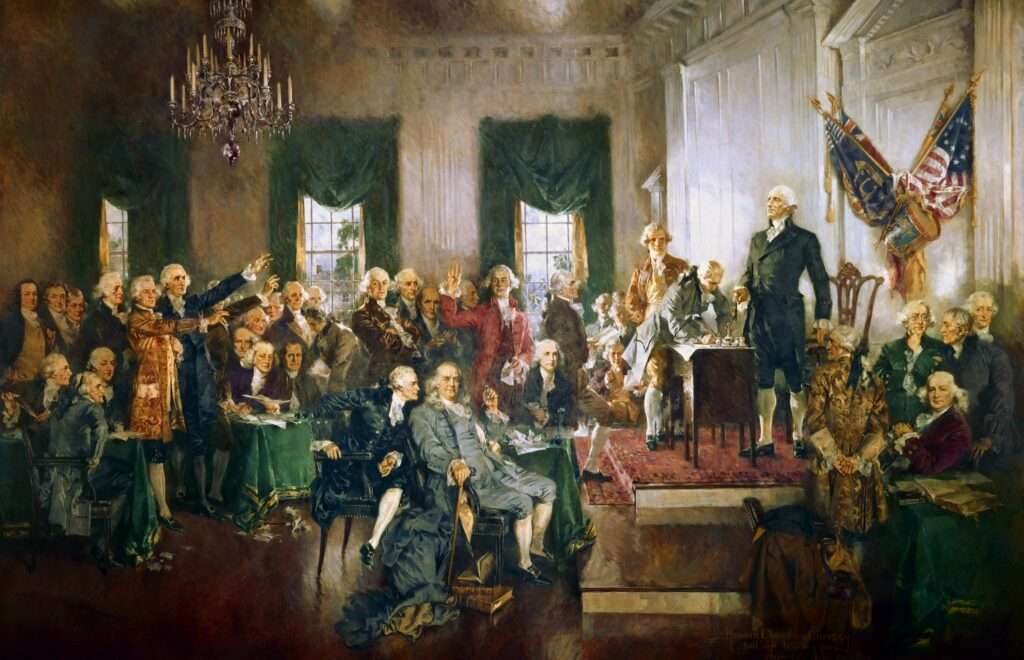
For a long time, the predominant interpretation of this text was the theory of collective rights, that is, maintaining that citizens lack the individual right to own weapons and that, therefore, local, state and federal legislative powers have the authority to regulate firearms.
In 1939, the Supreme Court considered that problem in United States v. Miller, legislating that Congress could regulate a sawed-off shotgun moving in interstate commerce under the National Firearms Act (1934) because the evidence did not suggest that it “had any reasonable bearing on the preservation or efficiency of a well-regulated militia.”
But the second interpretation holds that “the right of the people to have and bear arms” implies that individuals have a constitutional right to possess them. From this perspective, the U.S. Constitution restricts legislative bodies from prohibiting citizens from owning them. Or, at least, the Amendment makes the prohibitive and restrictive regulation presumptively unconstitutional.
In 2008, the Supreme Court ruled on the issue in District of Columbia v. Heller. The plaintiff challenged the constitutionality of a Washington D.C. act. prohibiting the possession of handguns. In a 5-4 decision, the Supreme Court struck down the firearms ban in D.C. for violating that right. The Supreme Court held that while the Second Amendment was created specifically for militia-related purposes, it did not allow the government to encumber a person’s right to bear arms. It marked the first time the Supreme Court actually invalidated a gun control act.
Two years later, in 2010, the Supreme Court further strengthened that reading in McDonald v. Chicago. The plaintiff challenged the constitutionality of a local government order prohibiting the possession of firearms by almost all private citizens. The Supreme Court found that an individual’s right to “have and bear arms,” protected by the Second Amendment, is embodied in the Due Process Clause of the Fourteenth Amendment and is therefore enforceable against states. It was, like the previous one, a very close decision: 5 vs. 4.
All this pendulum and revisionist movement is correspondingly documented in constitutional and Supreme Court histories. It originated in the context of the Reagan presidency and the heyday of neoconservative thought associated with it. The then-Republican presidential candidate became the first of his kind to endorse the NRA. Professor Duncan Hosie reminds us that later, as President:
Reagan cemented a symbiotic relationship between the gun lobby and the GOP. He selected federal judges committed to implementing the gun lobby’s constitutional vision, like Justice Antonin Scalia, and staffed his administration with gun rights supporters including Stephen Markman, who led the Office of Legal Policy for four years. Reagan’s Justice Department, particularly under Attorney General Edwin Meese from 1985 to 1988, championed an “originalist” theory of constitutional interpretation that gave binding force to pro-gun views
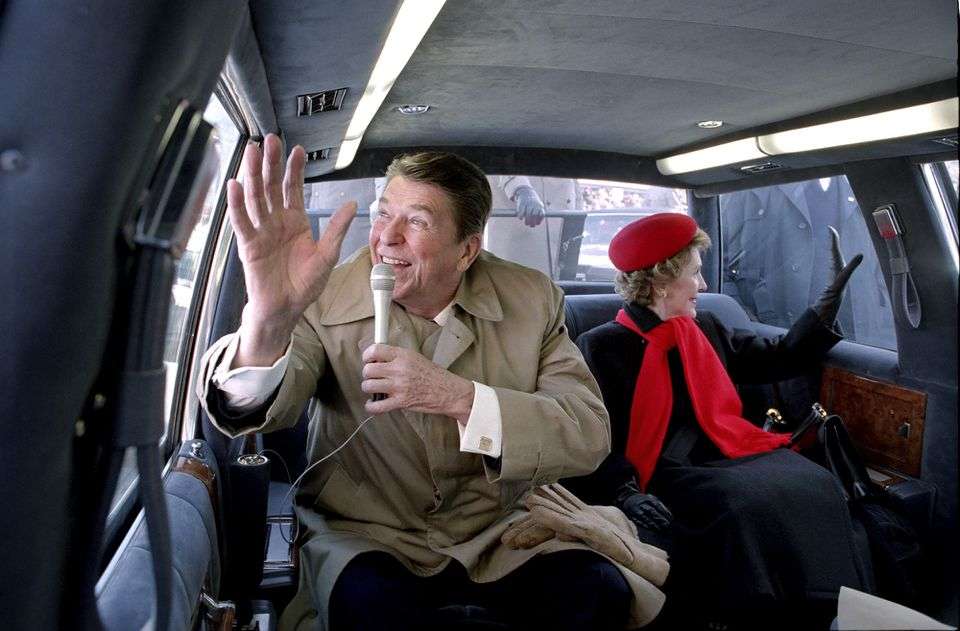
And also that:
The gun lobby, in turn, provided money and foot soldiers for Reagan’s political efforts. The NRA wrote an individual rights interpretation into Republican platforms, congressional reports and campaign pamphlets. It also subsidized and promoted conservative intellectuals who championed this revisionist reading of the Second Amendment, as did well-heeled conservative benefactors like the Olin, Scaife and Coors families. According to historian Carl Bogus, a majority of the new articles published from 1970 to 1989 that supported an individual-right reading of the Second Amendment “were written by lawyers who had been directly employed by or represented the NRA or other gun rights organizations, although they did not always so identify themselves.”
As part of the dissent and resistance, in 1988 John Gibson, a conservative federal judge, rejected the idea that the Second Amendment protected individual rights to bear arms: “for at least 100 years” the courts “have analyzed the Second Amendment purely in terms of protecting state militias.” And in 1991 another conservative, Chief Justice (retired) Warren Burger, called the gun lobby’s reading of the Second Amendment “the subject of one of the greatest pieces of fraud, I repeat the word ‘fraud,’ on the American public by special interest groups that I have ever seen.” And he concluded: “The very language of the Second Amendment refutes any argument that it was intended to guarantee all citizens the unrestricted right [of access] to any type of weapons they wish.”
That 180-degree interpretive turn, operated under the impact of politics, neo-conservatism and lobbying, was then responsible for decontextualizing the text of the Second Amendment and the reasons that motivated the founders of the nation to defend the ability of militiamen to keep in their possession the muskets and other weapons of that time. According to experts, an AR-15 — like those used in the Orlando, Las Vegas, Buffalo and Texas shootings — fires 45 rounds per minute at targets 550 meters away and at a speed of 994 meters per second.
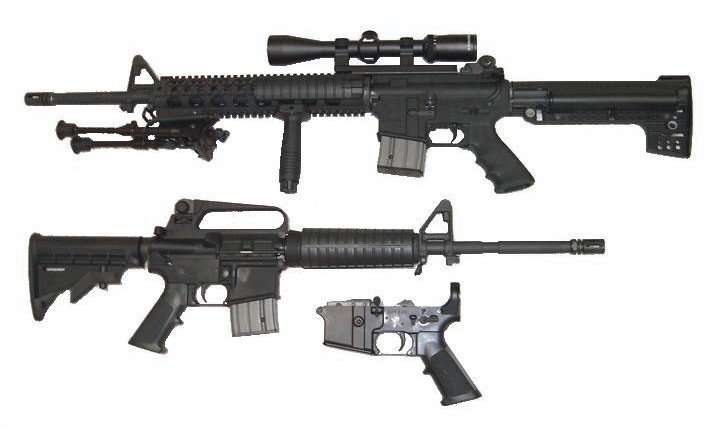
Armed with two AR-15s, a Sig Sauer gun and a Glock, the young Adam Lanza, the author of the Sandy Hook massacre (2012), needed only five minutes to kill 20 children between the ages of 6 and 7 in a classroom in Connecticut. And he did it after shooting his mother while she slept and killing five more people. And the Texas shooter, armed with the same weapon, killed 21 people at once.
The truth is that in a country where the meaning of the word “freedom” can include everything from the rational to the bizarre, citizens have been given the right to bear arms, which creates a vicious circle that serves as the basis for personal defense as well as to exercise crime and violence on property and people.
One of its corollaries consists of the possibility of buying very heavy weapons in armories, where in general almost anything can be acquired with a simple driver’s license and meeting requirements that seem more like fig leaves than effective protection. Uvalde’s killer bought two AR-15s immediately after his 18th birthday. At that age, however, in Texas he could not have legally acquired a bottle of Jack Daniels or a pack of Marlboros.
The 1994 regulation
The Buffalo and Uvalde shootings have sparked, perhaps as never before, calls for Congress to consider banning assault weapons. The predominant line has been to retake a federal ban on such weapons established in 1994: Public Safety and Recreational Firearms Use Protection Act, commonly called the Federal Assault Weapons Ban, signed at the time by President Bill Clinton.
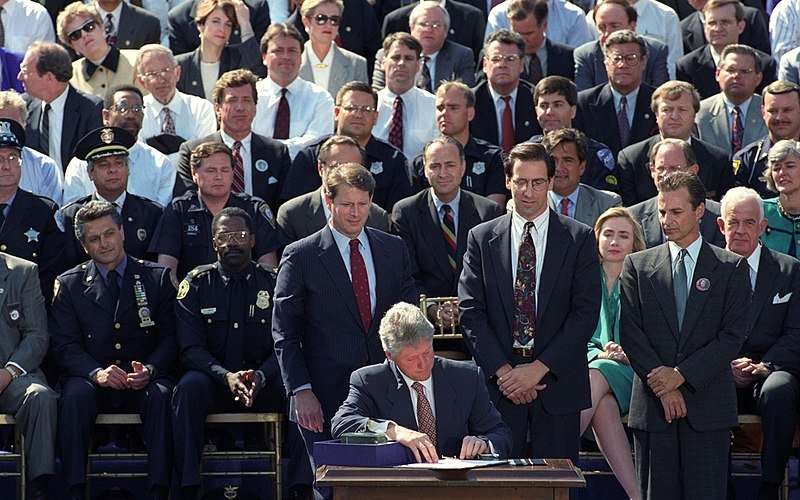
In his June 2, 2022 speech on gun violence, President Biden noted that bipartisan support in Congress then helped boost that act. But it should be noted that it was limited: it covered only certain categories of semi-automatic weapons like AR-15s and contained a “sunset provision” that allowed the ban to expire in 2004 — which it eventually did.
However, different studies have come to a clear conclusion. In the years after it went into effect, the number of deaths from mass shootings decreased and the increase in the annual number of such incidents slowed, even considering the Columbine High School massacre (1999), the deadliest mass murder occurred during the prohibition period (1994-2004), investigated by a powerful documentary by filmmaker Michael Moore.
To put it another way: incidents of this type decreased, but they did not stop. According to one report:
Breaking the data into absolute numbers, between 2004 and 2017— the last year of our analysis — the average number of yearly deaths attributed to mass shootings was 25, compared with 5.3 during the 10-year tenure of the ban and 7.2 in the years leading up to the prohibition on assault weapons.
Later, it notes:
We calculated that the risk of a person in the U.S. dying in a mass shooting was 70% lower during the period in which the assault weapons ban was active. The proportion of overall gun homicides resulting from mass shootings was also down, with nine fewer mass-shooting-related fatalities per 10,000 shooting deaths. Taking population trends into account, a model we created based on this data suggests that had the federal assault weapons ban been in place throughout the whole period of our study — that is, from 1981 through 2017 — it may have prevented 314 of the 448 mass shooting deaths that occurred during the years in which there was no ban.
The current plan, which needs bipartisan support, would for the first time make records of under-21 buyers of guns part of background checks. In addition, money would be sent to states for mental health and school safety programs, as well as for incentives to comply with local “red flag” laws, which allow authorities to obtain judicial approval to remove weapons from people who are considered dangerous. But it will be a difficult process that could lead to disputes and delays in the Senate.
In short, the United States has the highest concentration of weapons in private hands in the world: 120.5 per 100 inhabitants. About eight times more than in the European Union (15 per 100 inhabitants). In 2020, more than 40,000 people died from firearms. Adults aged 18-33 make up 20% of the U.S. population, but nearly 40% of gun deaths. That same year, 6.5 people were murdered per 100,000 inhabitants (in 2019 it was 5 per 100,000). The data means that in the United States too many people die every day from gunshots, which does not include those accidentally killed by those same weapons and those who commit suicide using them.
The sum of these categories is as dramatic as it is terrifying. Another expression of exceptionalism, but this time increasingly uncomfortable: more human beings are killed by firearms here every two years than during the Vietnam War.

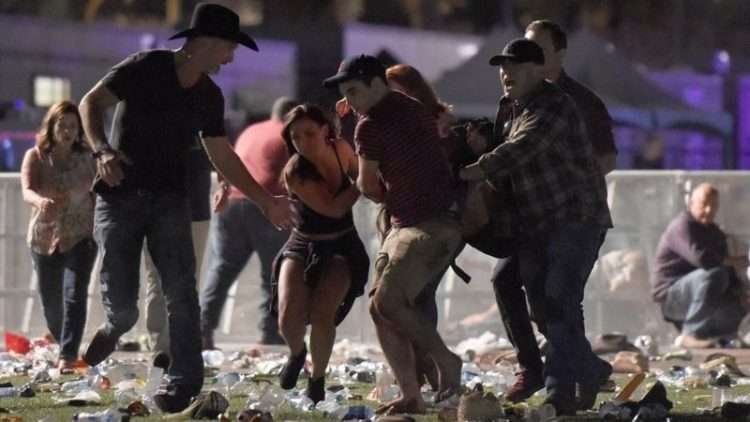
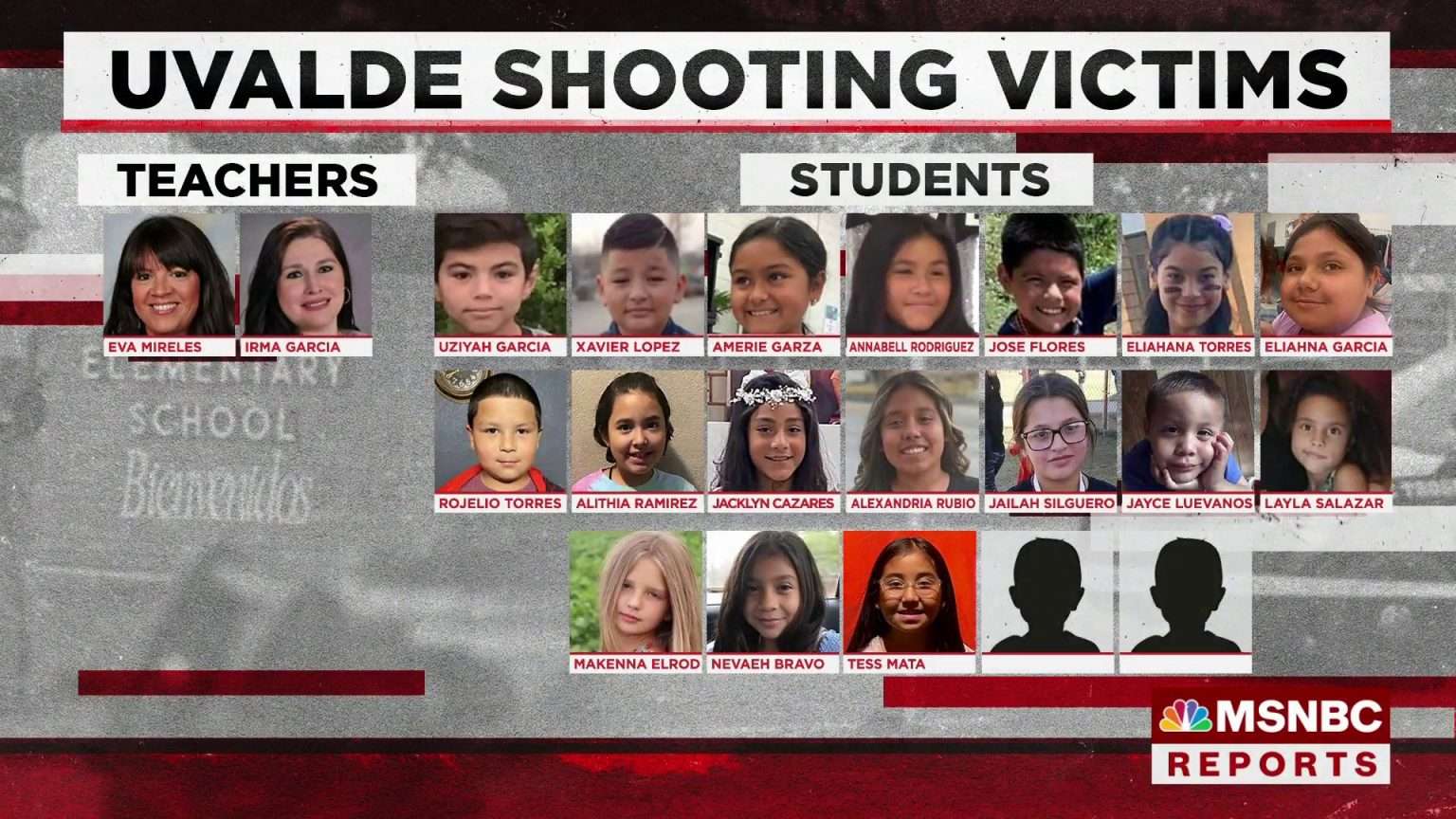









The Constitution and Bill of Rights Guarantees certain inalienable INDIVIDUAL rights. If you wish to live in a nation where the individuals rights don’t matter, feel free to move there.
btw,
you need to seriously reconsider using those numbers you got from Brady,
They are liable for that falsehood,
and maybe you are too.